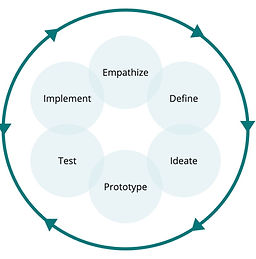Design Thinking
Design Thinking is a human-centered approach to problem-solving that emphasizes empathy, creativity, and collaboration to generate innovative solutions. It involves five key phases: Empathize, Define, Ideate, Prototype, and Test.
More tools added monthly

Empathize
In this phase, designers immerse themselves in the users' experiences to gain a deep understanding of their needs, challenges, and aspirations. Through observations, interviews, and empathy exercises, designers develop empathy for the users they are designing for.
Define
Once designers have gathered insights from the empathize phase, they define the problem they are trying to solve. This involves synthesizing the research findings to identify patterns, pain points, and opportunities. The goal is to create a clear and actionable problem statement that guides the design process.
Ideate
In the ideation phase, designers generate a wide range of creative solutions to address the defined problem. This is a divergent thinking process where quantity is valued over quality, and wild ideas are encouraged. Techniques such as brainstorming, mind mapping, and sketching are used to generate and explore ideas.
Prototype
In this phase, designers create low-fidelity prototypes of their ideas to quickly and cheaply test and iterate on them. Prototypes can take many forms, from paper sketches to digital wireframes to physical models. The goal is to quickly bring ideas to life to gather feedback and learn what works and what doesn't.
Test
The final phase of the Design Thinking process involves testing prototypes with users to gather feedback and refine the solutions. Designers observe how users interact with the prototypes, ask for feedback, and iterate on the designs based on the insights gained. This iterative testing process helps ensure that the final solution meets users' needs and expectations.



















